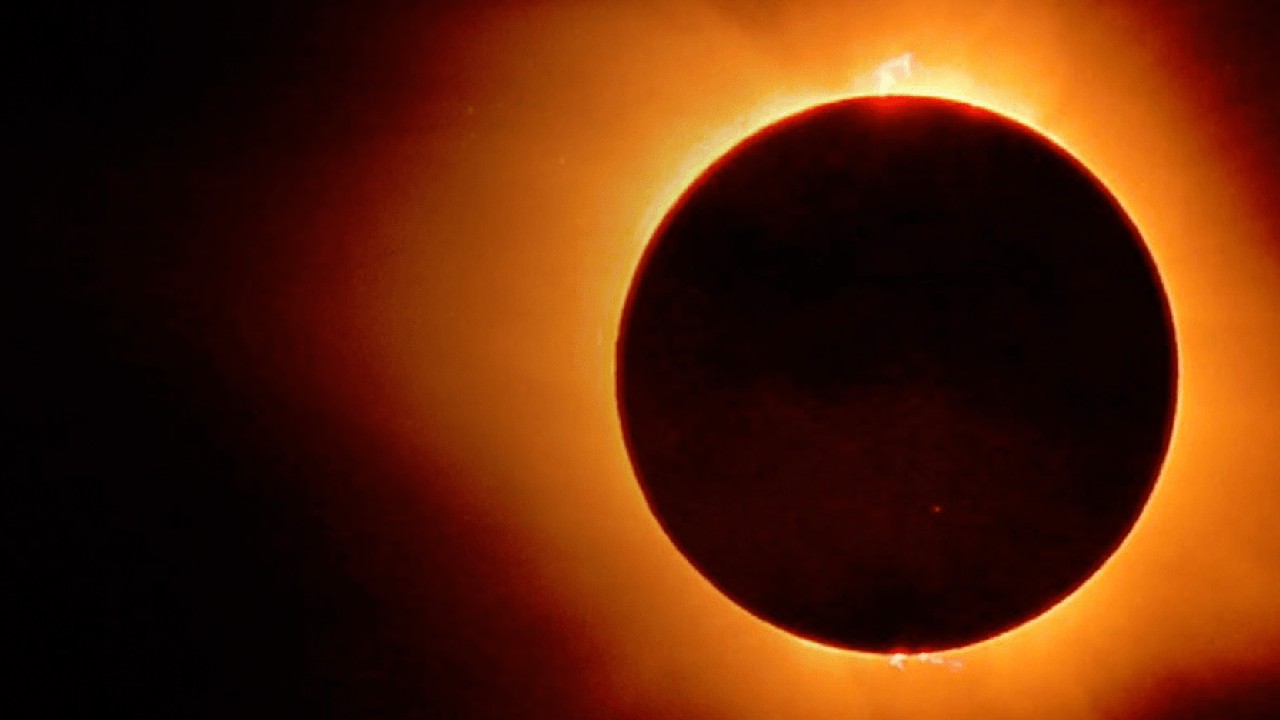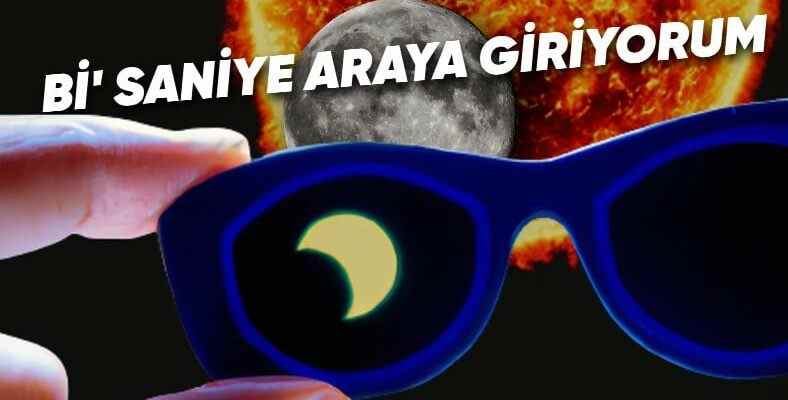You remember that famous image of the planets lined up side by side and reminding us how big the Sun is. So how is it that the Moon can cause an eclipse by blocking the Sun, which leaves all the planets dim next to it?
Solar and Lunar eclipses are among the events that excite many of us. You must have heard the saying, “One side of the moon is always dark”. Dark side of the Moonturned to the Sun today.
As a matter of fact, when it comes to solar eclipse, some questions come to our minds. one of them How the Moon blocks the Sun. In today’s article, we’ll look at how a solar eclipse happens and how the Sun’s light is dimmed.
First of all, let’s remember what a solar eclipse is.
We all know that solar and lunar eclipses are different things. But what both have in common is the Moon’s rotation around the Earth. During a solar eclipse, the Moon Between Earth and Sun when taking position; In the lunar eclipse at the back of the world is positioned.
So why doesn’t the Moon always cause a solar eclipse while it’s constantly revolving around us?
The Moon’s Throwing Around the Earth one full tour about 1 month progress. However, we do not experience an eclipse every month. The main reason for this is the way the Moon revolves around the Earth.
Approximately at an angle of 5 degrees The rotating Moon does not rotate in a full circle. Therefore, it does not always come between the Sun and the Earth. Mostly some part of the Earth facing the Sun above or below it moves. Therefore, we would not experience an eclipse every month. As a matter of fact, there can be 2 to 4 eclipses every year today.
However, these eclipses are not always and everywhere observed ‘fully’.

solar eclipse whole, ringed or partial is divided into three. A total solar eclipse occurs when the Moon turns its dark side completely towards the Sun. When the Moon is exactly in front of the Sun, we see only a luminous circle. This circle we see is the Sun’s corona, also known as the ‘Crown of the Sun’. is the flaming part of the atmosphere.
Again, this is not always the case due to the Moon’s ecliptic rotational orbit, and same way all over the world not observed. For example, the total eclipse that we see can be observed as a partial eclipse in different parts of the Earth.
How come the Moon, which is about 400 times smaller than the Sun, can almost completely block our light?
In fact, a little perspective knowledge will suffice for this. Anyone who paints or has some interest knows that there is a rule of thumb in perspective: what’s near looks bigger and what’s far away looks smaller. Now, if we go back to our topic; The Moon is about 400 times smaller than the Sun.
In other words, we would see a total solar eclipse in a scenario where the Moon and Sun are equidistant. will not be possible. At this point, one of the reasons why we don’t always see the solar eclipse fully emerges. Because the Moon does not always rotate in front of the Sun, nor does it always rotate at the same distance. At this point, we experience partial or annular solar eclipses.
Let’s also take a look at partial or annular eclipses.
Partial eclipse, as you can understand from the name, is the Moon in front of the Sun. not completely closedeclipse If the Moon is further away from the Sun in the eclipse position, then an annular eclipse will occur and the Sun will not be completely closed.
In these eclipses, where the Sun is not completely closed, the Moon may be closer to the Earth, lower or higher than the Sun. In other words, for a total eclipse to occur, both the Moon and the Earth must be to be in the right position and on our planet from the right angle We should be watching the eclipse.
Eclipses could come to an end if the Moon’s orbit continues to expand.
Actually, we all know this. Because the aspects we call New Moon, Full Moon, First Quarter, Last Quarter and Crescent are the manifestations of the Moon. from its position in orbit originates. If the next solar eclipse 8 April 2024 is expected to occur. But the Moon is expanding its orbit further and further.
The orbit of the Moon, according to research about 3.8 cm more each year Growing. While these numbers may seem small for the moment, over time the Moon will appear smaller and smaller when viewed from our planet. In other words, it will be difficult for the Sun to completely block its way, and eventually the solar eclipse will be history. However, according to estimates, we have 600 million years there is more.
RELATED NEWS
Earthquake Professor’s Word “A Solar Eclipse Could Be the Last Drop to Overflow” Was on the Top of the Agenda: Does a Solar Eclipse Cause an Earthquake?
Although the solar eclipses we see during the New Moon phase of the Moon occur almost every year, most of them are only caused by the Earth. from a small part can be seen. Therefore, if you can see an eclipse, you are witnessing a rare moment.
Sources: NASA 1, NASA 2, NASA 3, SpacePlace, Exploratorium,
